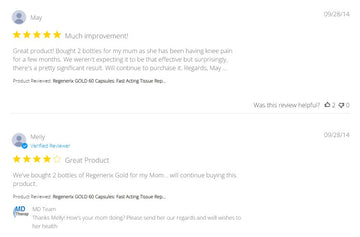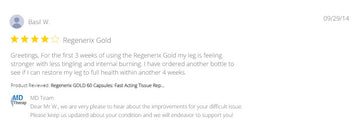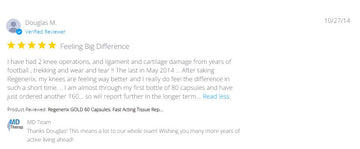Pelvic Tilts (Posterior/Anterior): Reboot Your Spine Control for Happier Hips & Low Back
由 MD therapeutics 上 Aug 17, 2025
Why pelvic tilts help (the principles)
-
Resets neutral spine: Alternating posterior (tailbone tucks) and anterior (tailbone tips) tilts teaches you where neutral actually is—reducing excess compression or shear at the lumbar facets and sacroiliac region.
-
Deep-core activation: Posterior tilt trains lower abs/obliques and pelvic-floor synergy; anterior tilt improves awareness of hip flexors and spinal erectors. Better timing → steadier lumbar control during walking, sitting, and lifting.
-
Synovial flow & disc nutrition: Gentle flex–ext oscillation “washes” facet joints and creates small pressure changes across the disc endplates—often easing morning or desk-posture stiffness.
-
Self-dosed & joint-friendly: You control range and tempo, keeping symptoms ≤3/10—useful for nonspecific low-back pain, spondylosis, and postural aches (adjust range if you have stenosis or disc irritation).
How to do it (range-aware)
-
Setup: Lie supine, knees bent, feet hip-width.
-
Posterior tilt: Exhale; gently draw ribs down and flatten the low back toward the mat (imagine zippering pubic bone toward ribs).
-
Anterior tilt: Inhale; allow the pelvis to tip so a small space appears under the low back (don’t jam into end-range).
-
Dosage: 2–3 sets × 6–10 slow cycles, 1–2×/day or as warm-up.
-
Progressions: Add 3–5 breaths in neutral between reps; integrate with marching, heel slides, or bridge holds while maintaining neutral.
-
Modifications: If hips pinch, widen stance; if neck strains, pillow the head; for sensitive discs, use micro-ranges or stay nearer to the more comfortable direction (often slight posterior).
Limits of exercise alone
-
Systemic drivers (sleep, stress, diet, metabolic health) aren’t fixed by drills.
-
Flares cap training load, creating stop–start progress.
-
Specific deficits persist: Many also need hip abductor and extensor strength, thoracic mobility, or gait retraining.
-
Slow remodeling: Discs, tendons, and joint capsules adapt over months—consistent loading plus recovery and nutrition beats “exercise only.”
Why add nutritional correction
-
Improve circulation so post-session tissues receive oxygen/nutrients.
-
Promote repair with structural inputs (e.g., collagen peptides, hyaluronic acid) that your practice helps “signal” into tissues.
-
Reduce excessive inflammation so daily work remains tolerable and consistent.
-
Avoid tissue damage by buffering oxidative and catabolic stress from training.
Botanicals & nutrients often paired with spine-friendly rehab
(Blends traditional lore with published research; evidence ranges from promising to mixed. Check interactions and personal suitability with your clinician.)
Ginger (Zingiber officinale)
-
Traditional use: Ayurveda & East Asian medicine for circulation and “wind-damp” aches.
-
Research snapshot: Standardized ginger has shown modest osteoarthritis symptom support in some trials; effects vary by dose/extract.
Turmeric / Curcumin (Curcuma longa)
-
Traditional use: Core Ayurvedic spice for comfort and resilience.
-
Research snapshot: Bioavailability-enhanced curcumin extracts have reduced knee-OA pain and improved function vs placebo in multiple studies.
-
Food reality: Culinary turmeric contains relatively little curcumin—hard to match study-like intakes via meals.
Boswellia / Frankincense (Boswellia serrata)
-
Traditional use: Ayurveda’s shallaki resin for joints.
-
Research snapshot: Standardized extracts have demonstrated improvements in pain and function in OA cohorts.
Winter Cherry / Ashwagandha (Withania somnifera)
-
Traditional use: Adaptogen supporting resilience and musculoskeletal comfort.
-
Research snapshot: Trials suggest immunomodulatory effects and symptom support in knee-pain populations; may aid training tolerance.
Collagen Peptides (Type II focus)
-
Concept: Provide peptides that may support cartilage and connective-tissue metabolism—useful alongside controlled pelvic motion and core retraining.
Hyaluronic Acid (oral)
-
Concept: Contributes to joint lubrication/viscosity and smoother motion; oral forms are used to support comfort and function.
Cat’s Claw (Uncaria spp.)
-
Traditional use: Peruvian/Amazonian remedy for “rheumatism.”
-
Research snapshot: Placebo-controlled work reports short-term improvements in activity-related pain; broader evidence is still developing.
The practicality problem
-
Food-only dosing is tough: Daily, research-like intakes of curcumin or ginger via meals are impractical.
-
Pill burden & cost add up: Buying six–seven separate products (ginger, turmeric, boswellia, ashwagandha, collagen, HA, cat’s claw) multiplies capsules and monthly spend versus one comprehensive formula.
A convenient all-in-one option: Regenerix Gold™
Prefer pelvic tilts + nutrition without juggling bottles?
-
What’s inside: Hydrolyzed Type II Collagen, Hyaluronic Acid, plus Ginger, Turmeric, Frankincense (Boswellia), Cat’s Claw, and Winter Cherry (Ashwagandha)—the same seven ingredients discussed above—combined to promote healthy joint and muscle function and support everyday recovery.
-
Dosing: 2–3 capsules daily.
-
Price: $98 a bottle.
-
Why it fits here: One product covering seven evidence-linked ingredients is simpler—and typically more cost-effective—than buying 5–7 separate supplements.
-
Track record: Recommended by doctors and physical therapists internationally for about a decade (individual clinician views vary).
Supplements support healthy function; they don’t diagnose, treat, or cure disease. Check interactions (e.g., anticoagulants with turmeric/ginger/boswellia) and suitability with your clinician.
This week’s mini-plan
-
Daily: Pelvic tilts 2–3 sets × 6–10 cycles, micro-ranges first.
-
2–3×/wk pairings:
-
Glute bridges (hold 5–10 s, neutral pelvis),
-
Dead bug (easy) (maintain gentle posterior tilt),
-
Hip-flexor stretch (short sets, no pinching).
-
-
Pain rule: Keep ≤3/10 and resolved within 24 h; otherwise shrink range by ~30–50% and re-progress.



